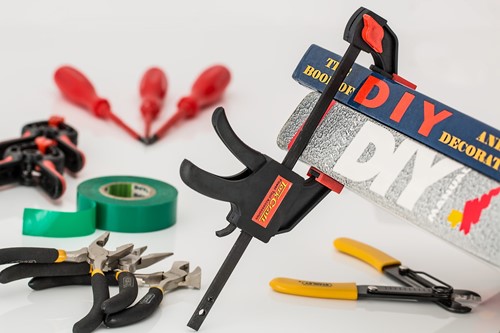Is Spray Foam or Fiberglass Insulation More Cost-Effective for DIY Homeowners?

While upgrading a building’s insulation may not feel as exciting as an expansive new kitchen, the potential energy savings add up. Here are a few things about fiberglass and spray foam insulation property owners may want to consider.
What Homeowners Need To Know About Fiberglass Insulation
The upfront investment of fiberglass insulation proves attractive to DIY homeowners because it remains quite low by comparison. In addition, this type of insulation can be purchased at local home materials outlets and easily transported. The rolled “batts” typically present yellow or pinkish fiberglass on one side and a paper layer on the other.
Installation requires DIYers to unfurl them directly into the spaces between the joists above your ceiling. The process makes installing new fiberglass insulation incredibly easy for a DIY homeowner. In terms of being cost-effective, a reasonably fit and agile homeowner may not require the help of a construction professional.
What Homeowners Need To Know About Spray Foam Insulation
The upfront cost of spray foam insulation generally exceeds that of fiberglass batts. This product typically involves equipment to disburse it into attics and behind walls. Other key differences involve where spray foam insulation installations are placed.
Rather than spray the materials between ceiling joists, it makes more sense to install it between roof rafters (support timbers directly holding up the roof). That key difference has significant implications to reduce air penetrations. Unlike fiberglass batts that lay over the ceiling and trap cold air in the attic, spray foam creates a determined barrier against drafts. As a result, the conventional wisdom is that properly installed spray foam can better nearly eliminate air penetrations from entering the building.
How To Decide Between Spray Foam and Fiberglass Insulation
Making an informed decision between spray foam products and fiberglass batts requires DIY homeowners to draw a few simple distinctions. These include upfront costs, reduced air penetrations and the installation process.
Handy DIY homeowners tend to have little difficulty rolling out fiberglass batts. Spray foam, on the other hand, may require enlisting a professional installer and incurring the cost associated with a construction professional. Last, it’s essential to weigh the upfront expenses against how much money each product will save you.
About the Author

Daniel Martin, Higgins Group Private Brokerage, Licensed in CT, Lic. #RES.6767971
With over two decades of experience in Connecticut real estate, Daniel Martin is a seasoned Realtor at Higgins Group Private Brokerage, renowned for his exceptional market insight and unwavering client dedication. A lifelong Connecticut resident, Daniel's deep roots in the community, coupled with his extensive professional background, provide an invaluable advantage to both buyers and sellers across Fairfield and New Haven Counties.
Daniel's distinguished career is marked by consistent achievement, earning him the prestigious Connecticut Magazine 5 Star Realtor award from 2014 to 2025. He is a perennial Top Producer, recognized as both a Top Listing Agent and Top Selling Agent, a testament to his strategic approach and keen understanding of market dynamics. His expertise spans a broad spectrum of real estate needs, including guiding First Time Home Buyers, navigating transactions for Single and Multi-Family Homes, Land, New Construction, New Residential Developments, Condominiums, Downsizing, and Rentals.
Beyond his impressive track record, Daniel's professional affiliations include memberships with the National Association of REALTORS (NAR), Connecticut Association of REALTORS (CAR), Bridgeport Board of Realtors, Smartmls and Greenwich MLS. His foundational education in real estate from Naugatuck Valley Community College, complemented by studies at Connecticut School of Electronics and Housatonic Community College, underpins his comprehensive understanding of the industry.
Daniel's unique blend of customer service acumen and technological proficiency sets him apart. He leverages every available marketing resource to ensure his clients' homes gain maximum exposure and stand out in the competitive market.
When not orchestrating successful real estate ventures, Daniel cherishes time with his family, including his wife, two children, and four grandchildren. A passionate musician and golf enthusiast, he embodies the vibrant spirit of the Connecticut communities he serves. Daniel's network extends globally, allowing him to facilitate referrals anywhere in the world.
